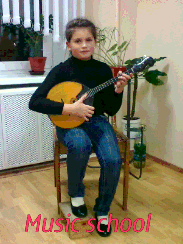Scottish Sport
HIGHLAND GAMES
The Highland Games go back to contests of strength among the clans in ancient times, a way for the chiefs to choose the strongest men as their warriors. King Mael Coluim III, in the 11th Century, summoned contestants to a foot race to the summit of Craig Choinnich. This may have been the origin of today's modern Highland Games.
During the Celtic revival of the early 19th Century, there was a renewed interest in the traditions of the clans of the Scottish Highlands. Various Highland Societies, beginning in the 1780s, began to organize events which eventually led to the Highland Games we know today.
This modern revival of the Games received an enormous boost with the visit of King George IV to Scotland in 1822, although events had been held in previous years. In the 1840s, in Braemar, the Games began as a fundraising effort by local artisans and in 1848, Queen Victoria and Prince Albert began to patronize them. The following year, they were moved to the grounds of Balmoral Castle itself.
In the 19th Century, Baron Pierre de Coubertin visited a number of athletic competitions in preparation for the forthcoming Olympic Games, in order to examine the technical organization of such a competition. Among them, he visited a Highland Games event in conjunction with the Paris Exhibition of 1889. That event, in addition to what we today would call track and field events, also contained wrestling, tug-of-war, cycling, as well as competition in piping and dancing.
Heavy Athletic Events
Standard Highland athletics events:
Caber toss: a long tapered wooden pole is stood upright and lifted by the competitor who balances it vertically in his hands. Then he runs forward and tosses it end-over-end, "turning the caber". Cabers vary greatly in length, weight, taper and balance.
Stone put: this event is similar to the modern-day shot put in the Olympic Games. However, instead of a steel shot, a large stone, of variable weight is often used.
Scottish hammer throw: this event is similar to the hammer throw in modern track and field competitions, though with some differences. In the Scottish event, a round metal ball is attached to the end of a shaft. With feet in a fixed position, the hammer is whirled about the head and thrown for distance over either shoulder.
Weight throw: This is two events, one using a light (28 lb) and the other a heavy (56 lb) weight made of metal with a handle attached. It is thrown with one hand and the longest throw wins. Weight over the bar, is where athletes attempt to toss a 56 pound weight with an attached handle over a horizontal bar using only one hand. Each athlete is allowed three attempts at each height.
Sheaf toss: A bundle of straw (the sheaf) weighing 20 pounds (9 kg) and wrapped in a burlap bag is tossed vertically with a pitchfork over a raised bar like that used in pole vaulting.
Учителя английского языка гимназии №1 г. Старые Дороги 16 января провели среди учащихся 5-6-х классов свои "Шотландские забавы" .

%D0%A4%D0%BE%D1%82%D0%BE01420.jpg)










